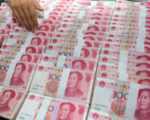China’s Factory Activity Expands for Second Month Amid Stimulus and Trade Uncertainty

China’s manufacturing sector showed modest growth for the second consecutive month in November, with the official purchasing managers’ index (PMI) rising to 50.3, a seven-month high, up from October’s 50.1. This figure, released by the National Bureau of Statistics, exceeded expectations of 50.2 from a Reuters poll, signaling a recovery in the world’s second-largest economy. A reading above 50 indicates expansion, while below that signals contraction.
This improvement follows months of a sluggish manufacturing environment, where tumbling producer prices and declining orders weighed heavily on factory output. Two consecutive months of expansion suggest that Beijing’s recent stimulus measures are beginning to boost confidence across factory floors. However, potential trade tensions with the U.S., led by President-elect Donald Trump, cast uncertainty over the outlook for 2024.
Trump recently announced plans to impose a 10% tariff on Chinese goods, aiming to pressure Beijing to curb the production of chemicals used in fentanyl manufacturing. During his campaign, he also hinted at even steeper tariffs of up to 60%, presenting significant risks for China’s export-dependent industrial sector.
In October, Chinese exports surged unexpectedly, a rise attributed to factories accelerating shipments in anticipation of further U.S. and EU tariffs. Analysts fear that such preemptive gains may not translate into long-term stability.
Stimulus Boost but Demand Remains Insufficient
Economists point to fiscal and monetary policy adjustments since the Politburo meeting in late September as contributing to the improved PMI figures. Zhang Zhiwei, president of Pinpoint Asset Management, noted that these measures have provided temporary stabilization but cautioned that the 2025 outlook remains unclear.
“The looming trade war will delay corporate investment decisions, and while fiscal stimulus is expected, its scale and focus remain uncertain,” Zhang said. A key policy meeting in December may provide more clarity on China’s economic strategies for 2024.
The November PMI data revealed a mixed picture: total new orders grew for the first time in seven months, but export orders contracted for the seventh consecutive month. Zhang Liqun, an analyst at the China Logistics Information Center, highlighted that insufficient demand continues to constrain production. He emphasized the need for stronger government-driven public investments to stimulate enterprise orders.
Non-manufacturing PMI, which encompasses construction and services, dropped to 50.0 in November from 50.2 in October. While services sector activity showed modest growth for the second month, the overall trend underscores lingering weaknesses in the broader economy.
Government Stimulus and Signs of Recovery
China has introduced substantial stimulus packages to support its economy. A 10 trillion yuan ($1.38 trillion) debt program was unveiled earlier in November to address municipal financing challenges. The central bank’s September intervention, marking its largest since the pandemic, was aimed at steering the economy toward the government’s growth target of around 5%.
Early signs of economic recovery are emerging. Retail sales posted their strongest growth since February, while property sector declines began to narrow. However, industrial output slowed slightly in October, and industrial profits continued to decline, reflecting persistent challenges for businesses.
China’s November composite PMI, which includes manufacturing and services activity, remained steady at 50.8, further hinting at stabilization. Analysts await the private-sector Caixin factory survey, set to be released Monday, which is expected to edge up to 50.5.
Despite these signs of improvement, economic vulnerabilities persist. Policymakers are reportedly considering maintaining the 5% growth target for 2024 and implementing additional measures to bolster domestic demand.





















